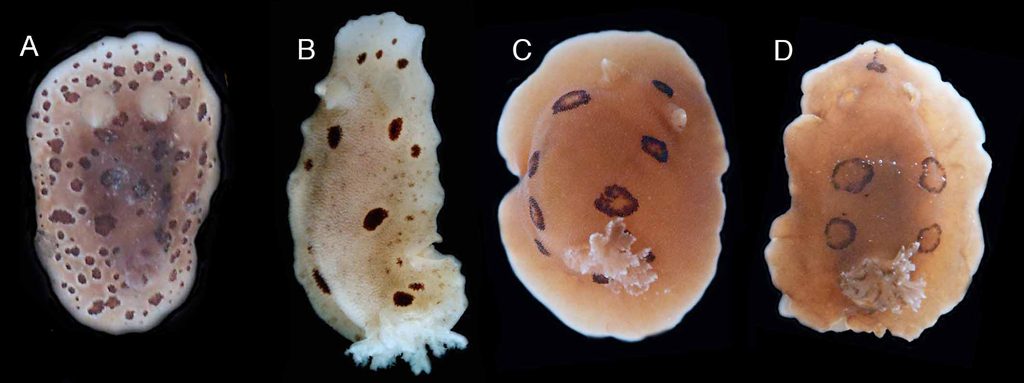 |
Diaulula sandiegensis Complex
Image courtesy of Tabitha Lindsay
Now we report a new example of pseudocryptic species pairs, the common, widespread, and well-known species Diaulula sandiegensis is a complex of two species. Behrens & Valdes (2001) studied this species in detail across its entire range, using anatomical information and concluded there was only one species. However, a new study using molecular information as well as ecological and reproductive behavioral data concluded that Diaulula sandiegensis is actually two species that overlap in range along the North Eastern Pacific coast. These two species are pseudocryptic and can be distinguished externally.
The first species, Diaulula sandiegensis is found from the outer coast of northern Baja California, Mexico, to Barkley Sound, British Columbia, Canada; however it is rare from northern California to Washington, only to become common again subtidally in Washington and British Columbia. This species is recognizable because it lacks dark spots on the mantle margin.
The second species, Diaulula odonoghuei has a large geographic range across the North Pacific, from Korea, Japan and the Russian Far East to the Pacific coast of North America southwards to Bodega Bay in northern California. This is the dominant species intertidally from Alaska to Fort Bragg, California, and can be recognized because it has dark spots on the mantle margin.
The photographs above illustrate the color variation in both species. A-B, Diaulula odonoghuei; C-D, Diaulula sandiegensis.
And stay tuned, there will be more Eastern Pacific surprises coming up!
References:
BEHRENS,D.W.& VALDES,A.2001.The identityof Doris(s.l.)species Macfarland,1966(Mollusca,Nudibranchia,Discodorididae):a persistent mystery from California solved. Proceedings of the California Academy of Sciences,52:183-193.
Department of Biological Sciences
California State Polytechnic University
3801 West Temple Avenue
Pomona, California 91768-4032
Send Angel email at aavaldes@cpp.edu

|
